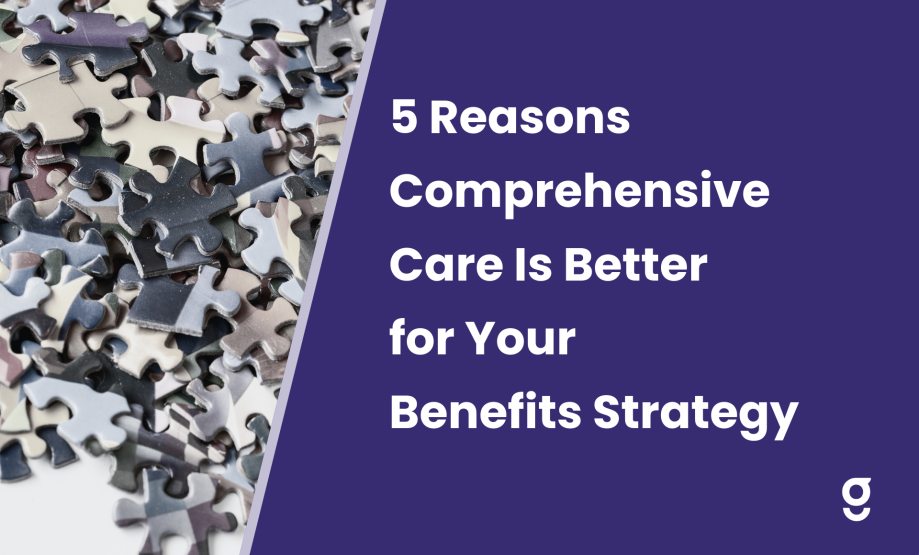5 Reasons Comprehensive Care Solutions Are Better for Your Benefits Strategy
With the proliferation of point solutions over the last 4 years, we’re seeing declining enrollment in one-condition programs and fatigue from benefits managers who have to oversee multiple vendors.
Comprehensive solutions offer health care for multiple conditions in one, unified platform. As we navigate the ever-changing benefits landscape, here are 5 reasons why a comprehensive care solution is the better choice for your employees:
1. High Enrollment Rates
Comprehensive care solutions drive high enrollment rates for two reasons. First, they provide care for multiple conditions, which means a large portion of employees can benefit from their services.
Point solutions have low enrollment rates for employees with multiple health issues (like back pain and anxiety) because they are less likely to engage with multiple, separate solutions. Comprehensive care benefits make it easier for employees to access all of their care in one platform, resulting in high utilization.
Goodpath sees double-digit enrollment because we support multiple conditions, whereas single-solution competitors see < 3% enrollment.
2. Addressing Comorbidities
Many health issues are interconnected, like back pain and depression or IBS and anxiety. By focusing on multiple conditions, comprehensive care solutions take into account the comorbidities impacting the patient’s health. This means that someone who signed up for neck pain also gets help for their depression, because the care pathways are integrated. This broad focus results in more effective and personalized care.
30-40% of Goodpath members that enroll for a physical condition have comorbid mental health issues. Many of these members would not seek out mental health support on their own.
3. Full Mental Health Support
Mental health support is not an added benefit of comprehensive care solutions – it is at the core of their care. Point solutions focused on physical health leave a significant gap in mental health support. 75% of those dealing with mental health issues will only seek care if they have a physical health issue, like back pain.
Employees need benefits providers that integrate mental health services alongside physical health care. This approach ensures that all employees, including those who might not seek out mental health care independently, have access to necessary support.
4. Cost Effectiveness for Employers
Comprehensive care solutions address both the condition (like back pain) and contributing factors (like diet or stress). This approach encourages healthy lifestyle change and prevents the escalation of conditions that could lead to more expensive interventions, like surgery. Employers see this benefit through lower health care and disability claims.
Because comprehensive care solutions treat multiple conditions, employees can sign up for one program instead of multiple. Employers see this cost effectiveness through lower per-employee costs, versus when employees sign up for several solutions.
5. Reduced Administrative Burden Personalized, Holistic Approach
One benefits provider that offers care across multiple conditions simplifies the job of benefits leaders. Working with one partner to carry out employee communication, health outcomes, invoicing and more dramatically reduces administrative burden, so that benefits leaders have more time for high-value tasks. When benefits leaders are not stretched between managing multiple solutions, they can execute the best benefits strategy for their employees.
Interested in learning more?
Implementing a multi-condition health solution that serves all employees in need is critical for healthy employees and a healthy business. Please visit our site if you are interested in learning more about Goodpath’s whole-person care for MSK, mental health, cancer survivorship and more.
